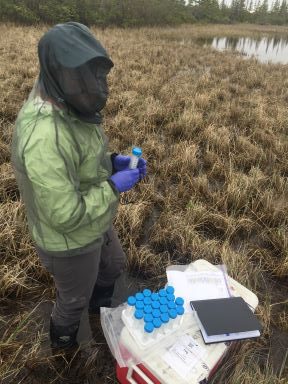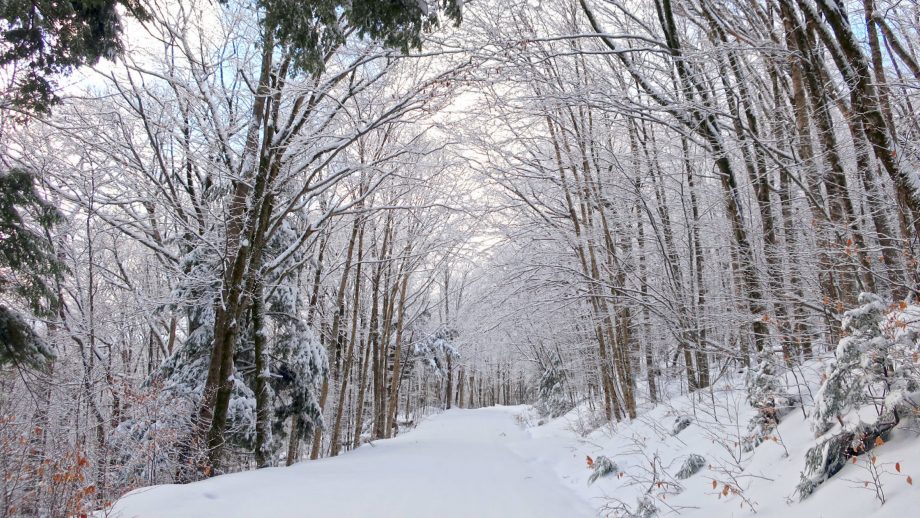Research by a University of Winnipeg team is illuminating the complex ways in which climate change is affecting ecosystems in the Churchill region.
Dr. Nora Casson, Canada Research Chair in Environmental Influences on Water Quality and Co-Director of the Prairie Climate Centre, and Dr. Matt Morison, Adjunct Professor of Geography and a former UWinnipeg Postdoctoral Fellow now with the Province of Manitoba, are among eight authors of Snow, Ponds, Trees, and Frogs: How Environmental Processes Mediate Climate Change Impacts on Four Subarctic Terrestrial and Freshwater Ecosystems.
The paper will soon be published in Facets, the official journal of the Royal Society of Canada’s Academy of Science.
“These four ecosystem components—snow, ponds, trees, and frogs—there had been a lot of really deep dives into each of those systems, but what was missing was zooming out and thinking about it at an ecosystem level, to see how trends relate to each other,” Dr. Casson explained.
“Why does what happens to the trees matter to the snow? We were trying to draw out those connections.”
When I fly up to Churchill and look out the window, the first thing I think is, ‘I can’t believe I’m still in Manitoba.’
Dr. Nora Casson
Snow, ponds, trees, and frogs were chosen as case studies because they are sensitive to climate change but also possess internal mechanisms that make them resilient. Understanding those mechanisms helps researchers determine the extent of ecological change ahead in the coming decades.
The paper suggests the effects of climate change on ecosystems around Churchill are species-specific and, at times, counter-intuitive and feedback-driven.
“Our goal with this paper was to tell these four stories about climate change impacts on terrestrial and freshwater systems, and to think about how those systems relate to each other, and also why you might not see direct linear impacts of climate change, but climate change is still really impacting that area,” Dr. Casson said.
Take wetland frogs, for instance. They’re sensitive to changes in external temperatures, but two species found around Churchill—the wood frog and boreal chorus frog—are maturing faster and growing larger as wetland temperatures increase.
“There’s winners and losers of climate change, and some animals are going to benefit from having higher temperatures,” Dr. Casson said.
She and Morison have spent years researching the Hudson Bay Lowlands (HBL), home to North America’s largest continuous wetland complex.
“It’s experiencing some of the most rapid climatic change in the world,” Dr. Morison said, “and this is affecting all parts of the ecosystems there. The degree to which these ecosystems are connected is maybe what surprised me the most.”
North key for climate change research
The HBL are projected to warm at a rate three to four times the global average in the coming decades.
“These are systems that are frozen for most of the year, so as those temperatures warm, systems in northern Canada are really changing rapidly,” Dr. Casson said.
Dr. Morison said the Churchill region is located at an “intersection of edges” that makes it important for climate change research.
“If you turned south, you might see a boreal environment with trees and seasonal ground frost. Turning north, you’d see the subarctic tundra with dissipating tree cover and continuous permafrost. Especially of interest to climate research is the shifting impacts of both where these edges are, and how things are changing on either side of them.”
Dr. Casson said the paper contributes to understandings of terrestrial systems in Churchill, which have been studied less than marine systems.
“When people think about Churchill, the thing that comes to mind is usually polar bears, belugas, or Hudson Bay,” she explained.
The rugged terrain Drs. Casson and Morison traverse up north is a challenging but rewarding place to research.
“It’s stunningly beautiful. These huge flat expanses with scrubby little trees and tons of birds and polar bears,” Dr. Casson said. “When I fly up to Churchill and look out the window, the first thing I think is, ‘I can’t believe I’m still in Manitoba.’”






